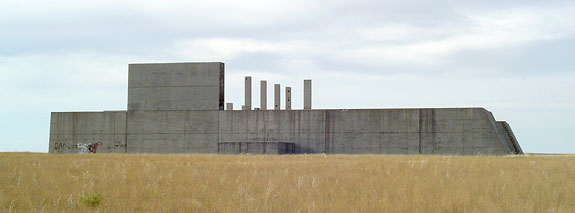The SALT I ABM treaty signed in Moscow on 26 May 1972 was of immense consequence for Safeguard, and its effects were felt immediately. The treaty permitted only one ABM site located within American Minuteman fields, but the United States was building two. On 27 May 1972 the Secretary of Defense directed a suspension of all Safeguard construction at Malmstrom and all future work at other sites except Grand Forks. But a permanent termination of contracts, dismantling or destruction of extraneous sites, and reorientation of the program could not take place until the Senate ratified the treaty, and this took four months.
When the ABM Treaty was signed, the Malmstrom Safeguard sites were about 10 percent complete. Work was in progress on the PAR's power plant, heat sink, and the second level of the PAR building. Only a small amount of concrete had been poured in the MSR building (MSCB) and its power plant, and some progress had been made on the MSR's missile field silo excavations. RSL's 2 and 3 had just been started, but work had not begun on RSL's 1 and 4.
The final signatures were placed on the ABM treaty on 1 October 1972. All Malmstrom construction contracts were officially terminated as of 5 October. The final act in the unfortunate history of the Malmstrom ABM facilities came on 11 September 1973, when Huntsville Division awarded two contracts for cleanup and restoration of the sites to as near natural condition as practicable. The restoration contractors cut away protruding reinforcing steel, bundled it, and shipped it out for scrap salvage. The same treatment was given wiring, piping, fencing, light poles, and other salvageable fixtures. Roads, parking lots, curbs, gutters, trailer sites, heat sinks, waste water ponds, Spartan and Sprint holes were all ripped up or filled in and landscaped.
As the final step, topsoil was bulldozed over the foundation ruins, graded, and seeded. By July 1974 most concrete remainders of the Safeguard facilities in Montana had received a dignified burial beneath thousands of yards of earth and a waving cover of wind-blown grass. The unfinished PAR building alone stands above ground as a mute monument to what might have been America's second ABM installation.

